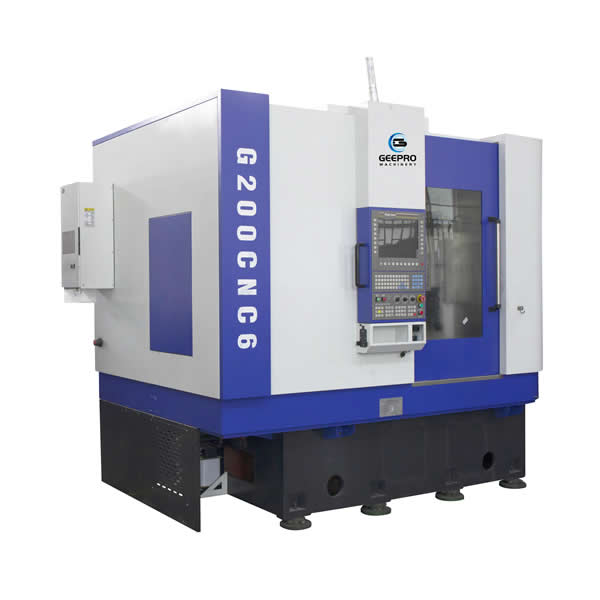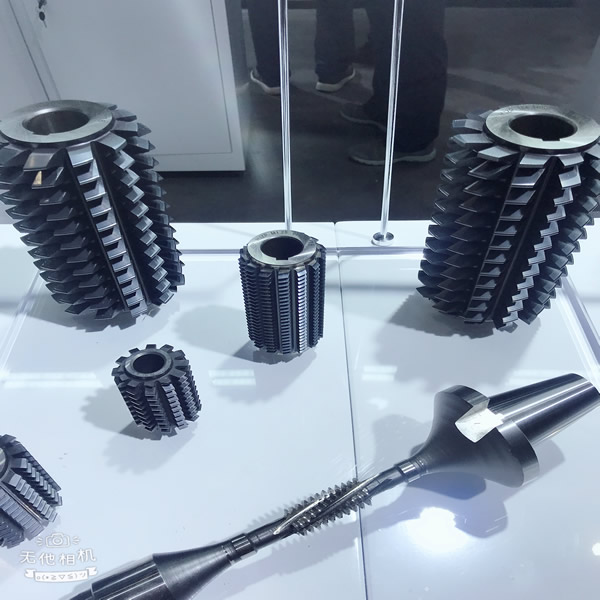G series are High Speed Direct Drive CNC Hobbing Machine. GEEPRO mainly supply G120、G150、 G200、G320、G400、G600 models.
Gear hobbing machine is one of the most widely used machine tools in gear processing machine tools. It can cut spur gears, helical gears, worm gears, sprockets, etc. on the gear hobbing machine. A gear processing machine tool that uses a hob to process spur, helical and herringbone cylindrical gears and worm gears according to the generation method. This machine tool can also process workpieces with various special tooth shapes such as splines and sprockets when using a special hob. The machining accuracy of ordinary gear hobbing machines is 7 to 6 grades (JB179-83), and the high-precision gear hobbing machines are 4 to 3 grades. The maximum processing diameter is 15 meters.
Today, I will introduce the processing principle of the gear hobbing machine and the treatment of common defects.
1. The tooth shape is abnormal - the main reason for the wrong tooth shape angle
(1) The tooth profile angle error of the hob itself is too large
(2) After the hob is sharpened, the radial error of the front face is large
(3) The error of the installation angle of the hob is large
Solution:
(1) Reasonable selection of the accuracy of the hob
(2) Control the sharpening quality of the hob
(3) Readjust the installation angle of the hob
2. The main reason for the incorrect number of teeth
(1) Incorrect adjustment of the split-tooth exchange gear
(2) Wrong selection of hob
(3) The workpiece blank size is correct
(4) When hobbing the helical gear, the additional movement direction is wrong
Solution:
(1) Re-adjust the split-tooth exchange gear and check whether the intermediate wheel is installed correctly
(2) Reasonable selection of hob
(3) Replace the workpiece blank
(4) Increase or decrease the intermediate wheel in the differential exchange gear
3. The tooth profile is abnormal - the main reason for the periodic error of the tooth profile
(1) After the hob is installed, the radial runout or axial movement is large
(2) Uneven rotation of the machine table
(3) Eccentric installation or tooth surface collision of cross-wheel or split-tooth exchange gear
(4) The tool holder slide plate is loose
(5) Unreasonable workpiece clamping produces vibration
Solution:
Control the installation accuracy of the hob
(1) Check the axial movement of the indexing worm of the machine tool table, and adjust and repair it
(2) Check the installation and operation of the span wheel and split-tooth exchange gear
(3) Adjust the plug iron of the tool holder slide plate
(4) Reasonable selection of the correct solution for workpiece clamping
4. The tooth shape is abnormal - the main reason for the edge of the tooth surface
The tooth profile error of the hob is too large or the teeth are incompetent, and the instantaneous speed changes greatly. There are four kinds of workpiece defects.
(1) After the hob is sharpened, the tooth equalization is poor
(2) The hob moves axially
(3) The radial runout of the hob is large
(4) blunt hob
Solution:
The main method: focus on the grinding quality of the hob, the installation accuracy of the hob and the geometric accuracy of the machine tool spindle:
(1) Control the grinding quality of the hob
(2) Ensure the installation accuracy of the hob, and do not knock when installing the hob; the end face of the washer is flat; the end face of the nut should be vertical; the inside of the taper hole should be clean; after the bracket is installed, no gap can be left
(3) Review the rotation accuracy of the machine tool spindle, and repair and adjust the hob spindle bearing, especially the thrust washer
(4) Replace the new knife
5. The tooth shape is abnormal - the main reason for the asymmetry of the tooth shape
(1) Misalignment of hob installation
(2) After the hob is sharpened, the radial error of the front face is large
(3) After the hob is sharpened, the helix angle or lead error is large
(4) The error of the installation angle of the hob is too large
Solution:
(1) Use the "gnawing knife flower" method or knife gauge to set the knife
(2) Control the grinding quality of the hob
(3) Readjust the installation solution of the hob








